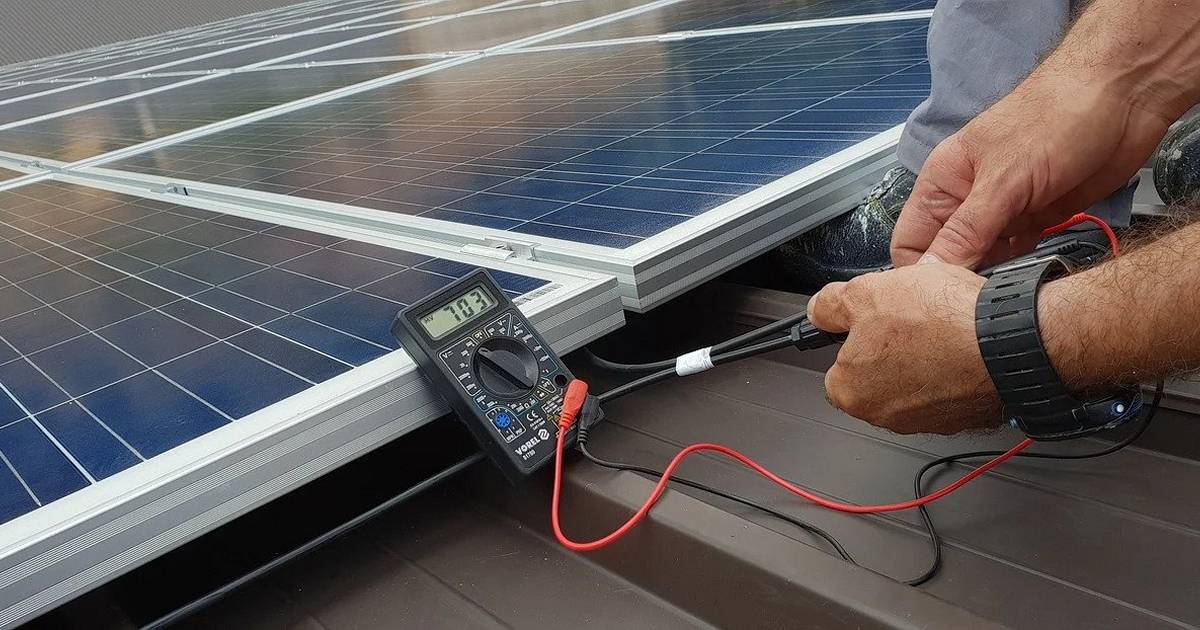Is your HVAC system working too hard? Use energy testing to find out
Is your HVAC system working too hard? Use energy testing to find out
Blog Article
The Duty of Energy Screening in Attaining an Airtight Service for Your Residential or commercial property
Power screening is necessary for home owners looking for to produce a closed setting. It determines air leakages and ineffectiveness that can jeopardize energy efficiency. Usual wrongdoers consist of voids around home windows and doors. Utilizing approaches like blower door tests and thermal imaging, house owners can get understandings right into their building's susceptabilities (energy testing). Comprehending these findings is essential. What actions should be taken once air leaks are identified? The answers hold the trick to enhanced convenience and savings
Comprehending Energy Screening and Its Importance
Power screening plays a crucial function in examining the airtightness of structures and structures. By measuring air leak, this method offers critical insights right into a home's power effectiveness, thermal comfort, and overall performance. Airtight buildings minimize energy intake, ensuring that heating & cooling systems run successfully. This screening procedure commonly involves methods such as blower door examinations, which create a regulated environment to recognize unplanned air pathways.Understanding the significance of power screening expands beyond compliance with building ordinance; it fosters a proactive strategy to sustainability. Recognizing air leaks early can bring about timely removal, ultimately enhancing interior air top quality and decreasing utility prices. Additionally, power testing adds to the durability of building products by minimizing wetness buildup and associated damage. As recognition of ecological effect rises, energy testing ends up being a vital tool for property owners and home builders intending for high-performance buildings.
Typical Resources of Air Leaks in Residence
Identifying typical resources of air leaks is essential for improving a residential property's energy efficiency. These leaks commonly happen in numerous locations of a structure, substantially impacting heating & cooling expenses. Usual wrongdoers include spaces around doors and windows, where seals may deteriorate gradually. In addition, electrical outlets and switches can produce pathways for air exchange if not appropriately protected. Basements and attics are additionally constant sources, especially where walls fulfill the roof or the structure. Various other potential leakage factors include plumbing infiltrations, airing vent systems, and the areas surrounding chimneys. In addition, older properties may endure from weakened building products, increasing vulnerability to air infiltration. By recognizing these typical resources, homeowner can take positive actions to seal leakages, thus boosting overall power efficiency and comfort within their areas. Attending to these issues is an essential part of establishing a closed solution for any kind of property.
Approaches of Energy Screening: Blower Door and Thermal Imaging
Efficient energy testing techniques, such as blower door tests and thermal imaging, play a crucial role in detecting air leaks within a residential or commercial property. The blower door examination entails pressurizing or depressurizing a structure to determine air movement and identify leakages. A calibrated fan is mounted in an exterior entrance, and the resulting stress difference highlights areas of undesirable air seepage. This method evaluates the overall airtightness of the structure.Thermal imaging enhances blower door examinations by visually spotting temperature level variations on surfaces, disclosing surprise air leaks. Infrared cams capture warmth loss or gain, permitting precise identification of trouble locations, such as inadequately insulated walls or spaces around home windows and doors. energy testing taylors sc. Together, these methods offer a detailed evaluation of a residential property's energy efficiency, allowing homeowner to attend to air leakages effectively and improve overall efficiency
Advantages of Identifying Air Leaks
Identifying air leakages supplies significant benefits for power performance and interior convenience. By sealing these leaks, structures can lower energy consumption, resulting in lower utility expenses and a decreased carbon impact. Additionally, improved airtightness contributes to a more secure interior setting, improving overall comfort for residents.
Power Performance Improvements
Detecting air leakages is essential for boosting power efficiency in buildings. Identifying these leakages allows homeowner to deal with areas where conditioned air runs away or unconditioned air gets in, resulting in significant power savings. By sealing cracks and gaps, structures can keep a regular temperature level, reducing the need on heating and cooling systems. This not just lowers energy expenses yet also minimizes the environmental influence connected with increased power intake. Additionally, power effectiveness improvements add to a structure's general sustainability, making it a more eye-catching option for eco-conscious customers or lessees. Inevitably, focusing on air leakage discovery and remediation aids enhance power usage, advertises accountable resource monitoring, and supports long-lasting economic advantages for home owners.

Enhanced Indoor Convenience
Addressing air leaks not only brings about power savings yet also significantly improves interior convenience. When air leaks are successfully determined and secured, temperature law within a property comes to be much more reliable. This leads to consistent interior temperatures, eliminating cool drafts in wintertime and locations in summer. Improved insulation also minimizes environmental pollution from outside, creating a quieter and even more calm living setting. In addition, enhanced air more high quality is attained by lessening the infiltration of exterior pollutants, allergens, and humidity, contributing to the total well-being of owners. House owners experience an even more pleasurable atmosphere, promoting relaxation and efficiency. Ultimately, recognizing and rectifying air leaks is vital for accomplishing perfect indoor comfort throughout the year.
How Power Testing Boosts Comfort and Indoor Air Quality
Power testing plays a vital duty in boosting temperature level law within indoor spaces, guaranteeing a constant and comfy atmosphere. By sealing and determining air leaks, it additionally significantly reduces the seepage of toxins, thus improving interior air quality. This double effect cultivates overall well-being for owners.
Improved Temperature Level Law
Efficient temperature policy significantly adds to both comfort and indoor air high quality, making it an important emphasis for modern-day structure layout. Energy testing plays a crucial role in achieving this regulation by recognizing areas where warmth loss or gain happens, allowing for targeted renovations. By guaranteeing an impermeable building envelope, power testing assists maintain constant indoor temperatures, decreasing the demand for extreme home heating or cooling. This security improves occupant comfort, as fluctuations in temperature can bring about pain and frustration. Additionally, effective temperature control can improve indoor air quality by lowering the risk of condensation and mold development, which thrive in irregular temperature conditions. Power testing is crucial for maximizing temperature administration in commercial and property homes. Industrial Reduced Pollutant Infiltration
While lots of elements add to indoor air high quality, decreased toxin infiltration attracts attention as visit this page a vital facet that energy testing can considerably enhance. Energy screening determines air leakages and powerlessness in a structure's envelope, which may permit outside contaminants, irritants, and wetness to enter interior spaces. By sealing these leakages, residential or commercial properties can properly restrict air-borne impurities, causing a healthier atmosphere. Enhanced airtightness not just enhances convenience but additionally minimizes the problem on heating and cooling systems, causing energy savings. Furthermore, reduced toxin infiltration cultivates much better total well-being for residents, as cleaner air promotes respiratory health and reduces allergic reaction symptoms. As a result, energy screening plays an essential function in producing both an energy-efficient and health-conscious space.
The Financial Impact of Power Testing on Utility Bills

Steps to Take After Power Screening Results
Once energy screening outcomes are in, homeowners need to meticulously review the searchings for to establish one of the most reliable path forward. The initial step involves identifying the areas that call for improvement, such as air leaks or insulation deficiencies. Homeowners should after that focus on repairs based upon the intensity of the issues and their possible effect on power efficiency.Next, it is recommended to speak with specialists who specialize in power performance to design a thorough activity strategy. This might consist of solutions like sealing voids, adding insulation, or updating windows and doors.After implementing the needed adjustments, a follow-up energy examination can figure out the efficiency of the repair work. Continual tracking is likewise necessary to ensure that the property maintains its closed standing gradually. By adhering to these actions, homeowners can substantially improve their residential or commercial property's power efficiency, leading to decreased utility bills and improved convenience.
Frequently Asked Inquiries
Just how Frequently Should I Conduct Energy Checking on My Residential or commercial property?
The regularity of power screening need to commonly be every few years, or adhering to considerable renovations. Routine assessments assist recognize effectiveness improvements and ensure that the home maintains excellent power performance with time, adapting to changing problems.
Is Energy Screening Necessary for New Constructions?
Power screening is vital for new constructions, as it recognizes prospective air leakage and insulation issues - energy testing south carolina. Implementing these tests guarantees energy efficiency, improves interior comfort, and fulfills building regulations, ultimately resulting in long-lasting price savings
Can I Execute Power Screening Myself?
Energy testing usually calls for specific tools and experience. While some house owners may try standard analyses, expert services ensure precise results and efficient identification of problems, eventually causing much better power performance and convenience in living areas.
What Is the Expense of Expert Energy Testing Providers?
The price of specialist power screening solutions commonly varies from $300 to $1,500, depending on home size, complexity, and place. Homeowners must consider prospective power financial savings when examining the financial investment in these solutions.
Just How Long Do Power Testing Outcomes Commonly Last?
Power testing results typically remain legitimate for one to three years, depending on factors like structure alterations and environmental adjustments. Normal updates are suggested to ensure accuracy and keep efficient energy efficiency criteria. Effective power screening techniques, such as blower door examinations and thermal imaging, play a necessary role in detecting air leakages within a building. Determining these leaks enables residential property owners to deal with locations where conditioned air escapes or unconditioned air goes into, leading to considerable power savings. Energy screening recognizes air leaks and weak points in a building's envelope, which might permit outside contaminants, irritants, and dampness to enter interior rooms. As homeowners progressively look for to reduce their energy costs, the duty of energy testing becomes crucial in recognizing inadequacies and leaks. House owners must after that focus on fixings based on the severity of the issues and their potential impact on energy efficiency.Next, it is advisable to consult with professionals who specialize in energy effectiveness to create a thorough action plan.
Report this page